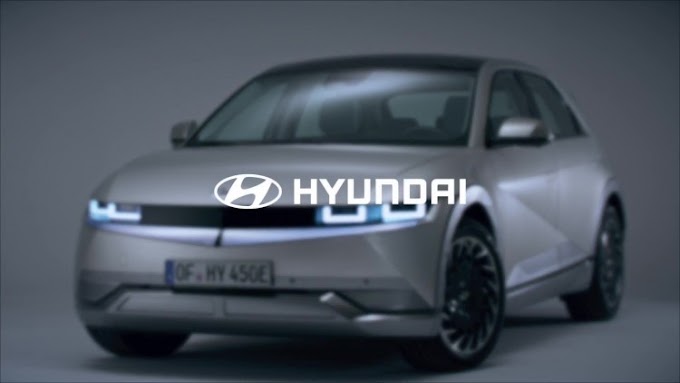The 2024 Toyota Prius Prime is a plug-in hybrid electric vehicle (PHEV) that offers a sleek design, a powerful performance, and a range of features that make it one of the best cars to buy in 2024. But how do you write SEO content that showcases the benefits of this model and attracts potential buyers? In this article, I’ll share some tips and best practices for writing SEO content for the 2024 Toyota Prius Prime, based on the style and techniques of Heather Lloyd-Martin, the pioneer of SEO copywriting.
What is SEO Content?
SEO content is content that is optimized for search engines, such as Google and Bing, to rank well and drive organic traffic to your website. SEO content follows certain guidelines and principles, such as:
- Using relevant keywords and phrases that match the search intent of your target audience
- Providing useful, informative, and engaging content that answers the questions and solves the problems of your readers
- Structuring your content with headings, subheadings, lists, bullet points, and other formatting elements to make it easy to scan and read
- Including internal and external links to relevant and authoritative sources to support your claims and provide additional value
- Writing clear and compelling titles, meta descriptions, and calls to action to entice clicks and conversions
Why is SEO Content Important for the 2024 Toyota Prius Prime?
SEO content is important for the 2024 Toyota Prius Prime because it can help you:
- Increase your visibility and authority in the automotive niche and the plug-in hybrid market
- Educate your readers about the features, specs, and benefits of the 2024 Toyota Prius Prime and how it compares to other models
- Persuade your readers to consider buying or leasing the 2024 Toyota Prius Prime and direct them to your landing page or contact form
- Build trust and loyalty with your readers and establish yourself as a credible and reliable source of information and advice
How to Write SEO Content for the 2024 Toyota Prius Prime
To write SEO content for the 2024 Toyota Prius Prime, you need to follow a process that involves:
- Researching your topic and audience
- Planning your content and outline
- Writing your content and optimizing it for SEO
- Editing and proofreading your content
- Publishing and promoting your content
Let’s look at each step in more detail.
Researching Your Topic and Audience
Before you start writing, you need to do some research to understand your topic and audience. This will help you:
- Identify the keywords and phrases that your target audience is using to search for information about the 2024 Toyota Prius Prime and related topics
- Analyze the search intent and the stage of the buyer’s journey of your target audience and tailor your content accordingly
- Study the competition and the existing content on the web and find gaps and opportunities to create unique and valuable content
- Gather facts, data, and sources to support your content and make it credible and authoritative
Some of the tools and resources you can use for your research are:
- Keyword research tools, such as Google Keyword Planner, SEMrush, or Ahrefs, to find relevant and popular keywords and phrases
- Search engine results pages (SERPs), to see what kind of content is ranking for your keywords and what questions and queries your audience is asking
- Websites and blogs of reputable automotive brands, publications, and experts, such as Car and Driver, Toyota, Edmunds, and Autoblog, to get information and insights about the 2024 Toyota Prius Prime and the plug-in hybrid market
- Customer reviews, testimonials, and feedback, to understand the needs, preferences, and pain points of your audience and how the 2024 Toyota Prius Prime can address them
Planning Your Content and Outline
After you have done your research, you need to plan your content and outline. This will help you:
- Define the goal and purpose of your content and how it aligns with your business objectives and your audience’s needs
- Choose the format and style of your content and how it matches the search intent and the stage of the buyer’s journey of your audience
- Organize your content and structure it with headings, subheadings, and other formatting elements to make it clear and logical
- Create a catchy and SEO-friendly title and a concise and enticing meta description for your content
Some of the tips and best practices for planning your content and outline are:
- Use the inverted pyramid model, which means starting with the most important and relevant information and then providing more details and explanations as you go along
- Use the AIDA model, which stands for Attention, Interest, Desire, and Action, to guide your readers through your content and persuade them to take the next step
- Use the 4 Cs of SEO copywriting, which are Clear, Concise, Compelling, and Customer-focused, to write content that is easy to understand, to the point, engaging, and relevant
- Use the 4 Us of headline writing, which are Unique, Useful, Urgent, and Ultra-specific, to write titles that stand out, provide value, create curiosity, and deliver on their promise
Writing Your Content and Optimizing It for SEO
After you have planned your content and outline, you need to write your content and optimize it for SEO. This will help you:
- Incorporate your keywords and phrases naturally and strategically in your content and avoid keyword stuffing and over-optimization
- Provide useful, informative, and engaging content that answers the questions and solves the problems of your readers
- Structure your content with headings, subheadings, lists, bullet points, and other formatting elements to make it easy to scan and read
- Include internal and external links to relevant and authoritative sources to support your claims and provide additional value
- Write clear and compelling titles, meta descriptions, and calls to action to entice clicks and conversions
Some of the tips and best practices for writing your content and optimizing it for SEO are:
- Use your main keyword in your title, meta description, introduction, conclusion, and at least one subheading
- Use variations, synonyms, and related keywords throughout your content to avoid repetition and improve relevance
- Use short sentences and paragraphs, active voice, and simple words to make your content clear and concise
- Use transitions, connectors, and signposts to make your content flow and logical
- Use storytelling, examples, anecdotes, and humor to make your content compelling and engaging
- Use the word “you” and address your readers directly to make your content customer-focused and personalized
- Use statistics, facts, data, and quotes to make your content credible and authoritative
- Use images, videos, charts, graphs, and other visual elements to make your content appealing and attractive
- Use a clear and strong call to action to tell your readers what to do next and how to do it
Editing and Proofreading Your Content
After you have written your content and optimized it for SEO, you need to edit and proofread your content. This will help you:
- Check your content for spelling, grammar, punctuation, and syntax errors and correct them
- Check your content for clarity, consistency, coherence, and accuracy and improve them
- Check your content for readability, tone, voice, and style and adjust them
- Check your content for SEO, keywords, links, and formatting and optimize them
Some of the tools and resources you can use for editing and proofreading your content are:
- Grammar and spelling checkers, such as Grammarly, Hemingway, or ProWritingAid, to find and fix errors and improve your writing
- Readability and SEO checkers, such as Yoast, Moz, or Readable, to measure and improve your content’s readability and SEO
- Plagiarism checkers, such as Copyscape, Quetext, or Turnitin, to ensure your content is original and avoid duplicate content issues
- Feedback and reviews, such as from your peers, colleagues, clients, or readers, to get suggestions and opinions on how to improve your content
Publishing and Promoting Your Content
After you have edited and proofread your content, you need to publish and promote your content. This will help you:
- Make your content visible and accessible to your target audience and the search engines
- Increase your traffic, engagement, and conversions from your content
- Build your reputation and authority in the automotive niche and the plug-in hybrid market
- Grow your audience and customer base and generate more leads and sales
Some of the tips and best practices for publishing and promoting your content are:
- Choose the right platform and channel for your content, such as your website, blog, social media, email, or podcast, and optimize it for each one
- Choose the right time and frequency for your content, such as based on your audience’s behavior, preferences, and expectations, and schedule it accordingly
- Choose the right metrics and tools for your content, such as traffic, rankings, clicks, shares, comments, leads, sales, and revenue, and measure them regularly
- Choose the right strategies and tactics for your content, such as SEO, social media marketing, email marketing, content marketing, or influencer marketing, and implement them effectively
Conclusion
Writing SEO content for the 2024 Toyota Prius Prime is not a simple task, but it can be rewarding and profitable if you follow the steps and tips outlined in this article. By following the style and techniques of Heather Lloyd-Martin, the pioneer of SEO copywriting, you can create content that showcases the benefits of this model and attracts potential buyers. Remember to research your topic and audience, plan your content and outline, write your content and optimize it for SEO, edit and proofread your content









